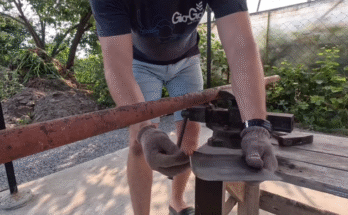
If you’re like many car owners, the thought of visiting a garage for every small issue can be both frustrating and expensive. The good news? You don’t always need a mechanic. Many car parts are surprisingly simple to replace at home — no special training required! With just a few basic tools and a little patience, you can save time, money, and even learn more about your vehicle.
In this article, we’ll cover several car parts you can easily replace yourself. Whether you’re a beginner or someone who’s just tired of paying for minor fixes, these do-it-yourself tasks can keep your car running smoothly — and your wallet happy.
1. Windshield Wiper Blades
Changing windshield wiper blades is one of the easiest DIY car maintenance tasks out there. Over time, wiper blades wear out and leave streaks or miss spots, reducing your visibility during rain or snow.
What You’ll Need: New wiper blades (check your car’s manual or measure your current blades to get the right size).
How to Do It:
- Lift the wiper arm away from the windshield.
- Press the tab or release mechanism to slide the old blade off.
- Slide the new blade in until it clicks.
- Lower the arm gently back onto the windshield.
Time Required: 5-10 minutes per blade.
2. Air Filter (Engine Air Filter)
Your engine air filter keeps dirt and debris from entering the engine. A clogged filter reduces performance and fuel efficiency. Fortunately, it’s a simple fix.
What You’ll Need: A new air filter (specific to your car model).
How to Do It:
- Open the hood and locate the air filter housing (usually a black box with metal clips or screws).
- Open the housing, remove the old filter, and insert the new one in the same orientation.
- Close the housing and secure it.
Time Required: 10 minutes.

3. Cabin Air Filter
This filter improves air quality inside your car by trapping pollen, dust, and pollutants. A dirty cabin filter can cause musty smells and reduced airflow from your vents.
What You’ll Need: A new cabin air filter.
How to Do It:
- The cabin air filter is usually behind the glove compartment or under the dashboard.
- Remove the glove box or access panel.
- Slide out the old filter and insert the new one in the correct direction (watch for airflow arrows).
- Reassemble the panel or glove box.
Time Required: 15–20 minutes.
4. Headlights or Taillight Bulbs
If a headlight or taillight burns out, don’t rush to the mechanic. Replacing bulbs is typically easy and much cheaper to do yourself.
What You’ll Need: Replacement bulbs (check your owner’s manual for the right type), gloves (to avoid touching the bulb glass).
How to Do It:
- Open the hood or trunk to access the back of the headlight or taillight housing.
- Twist the bulb socket to remove it.
- Pull out the old bulb and insert the new one.
- Reinstall the socket and test the light.
Time Required: 15–30 minutes per bulb.
5. Battery
If your car’s battery is old, you might notice slow starts or electrical glitches. Replacing it is straightforward, as long as you follow a few safety steps.
What You’ll Need: A new battery, gloves, wrench.
How to Do It:
- Turn off the engine and remove the key.
- Disconnect the negative cable (black), then the positive (red).
- Remove the battery hold-down clamp and lift out the old battery.
- Place the new battery, reconnect the positive terminal first, then the negative.
- Secure the clamp and test the car.
Time Required: 30–45 minutes.

6. Spark Plugs
Worn spark plugs can cause misfires, rough idling, or poor fuel economy. Replacing them is easier than it sounds, especially on older or simpler engines.
What You’ll Need: New spark plugs (right size and type), spark plug socket, ratchet, extension bar.
How to Do It:
- Remove the engine cover (if needed).
- Disconnect the ignition coil or spark plug wire.
- Use the spark plug socket to remove the old plug.
- Gap the new plug (if necessary) and screw it in gently. Do not over-tighten.
- Reconnect the coil or wire and repeat for the other plugs.
Time Required: 1–2 hours, depending on the number of plugs.
7. Fuses
Electrical problems like a dead radio, broken interior light, or power windows not working might be due to a blown fuse — an easy and free fix.
What You’ll Need: Replacement fuses (your car’s manual will list the types), fuse puller or tweezers.
How to Do It:
- Locate the fuse box (under the dashboard or hood).
- Check the diagram and locate the fuse that controls the malfunctioning system.
- Pull out the fuse and inspect it. If the metal strip is broken, it’s blown.
- Replace it with one of the same amperage.
Time Required: 10 minutes.
8. Oil Change (Optional for the Brave DIYer)
Changing your own oil requires a bit more effort and some mess, but it’s totally doable with the right tools.
What You’ll Need: New oil, oil filter, wrench, oil pan, funnel, gloves.
How to Do It:
- Lift the car with ramps or a jack and place a drain pan under the oil plug.
- Remove the plug and let the oil drain completely.
- Replace the plug and change the oil filter.
- Refill the engine with fresh oil using a funnel.
- Check the oil level and dispose of the old oil properly.
Time Required: 30–60 minutes.

Final Thoughts
Doing your own car maintenance isn’t just about saving money. It gives you confidence, a better understanding of your vehicle, and peace of mind. Of course, not all repairs should be DIY — complex issues like transmission problems, brake system failures, or suspension work are best left to professionals. But for simple, everyday parts like wiper blades, filters, lights, and spark plugs, you’ve got this.
By learning how to replace these common parts, you can avoid unnecessary trips to the garage, reduce repair costs, and feel more in control of your car’s upkeep. Grab your tools, open that hood, and give it a try — your car (and your budget) will thank you!



